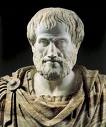Aristotle's Poetics

|
Aristotle’s Poetics 
|
1.0 Introduction
1.1. Objectives
1.2. Criticism and Creativity
1.2.1. What is the difference between criticism and creativity?
1.3. Plato’s Objection to Poetry
1.3.1. What were his objections?
1.3.2. Why he objected to poetry?
1.3.3. What is his Theory of Mimesis?
1.4. Aristotle: Introduction
1.4.1. How did he reply to Plato’s Objection?
1.4.2. How did he differ in his Theory of Mimesis from his Guru Plato?
1.5. Aristotle’s Definition of Tragedy
1.5.1. How does Aristotle distinguish among various fine arts?
1.5.2. What is his definition of Tragedy?
1.6. Aristotle’s theory of Catharsis
1.6.1. What are various interpretations given to the meaning of Catharsis?
1.6.2. What are various interpretations given to the meaning of Catharsis?
1.6.3. How far Catharsis is relevant today?
1.7. Aristotle’s Six parts of Tragedy
1.7.1. Which are the six important part of tragedy?
1.7.2. What are the characteristics of tragic hero?
1.7.3. What does he mean by hamartia?
1.8. Aristotle’s view of Epic
1.8.1. Is, according to Aristotle, Epic better than tragedy?
1.8.2. How does he distinguish Epic and Tragedy?
1.9. Let’s Sum Up
1.10. References and Further Readings
1.11. Glossary
1.12. Answers to Self Assessment Questions
| To read full chapter on Aristotle's Poetics - click on the next button |
|
